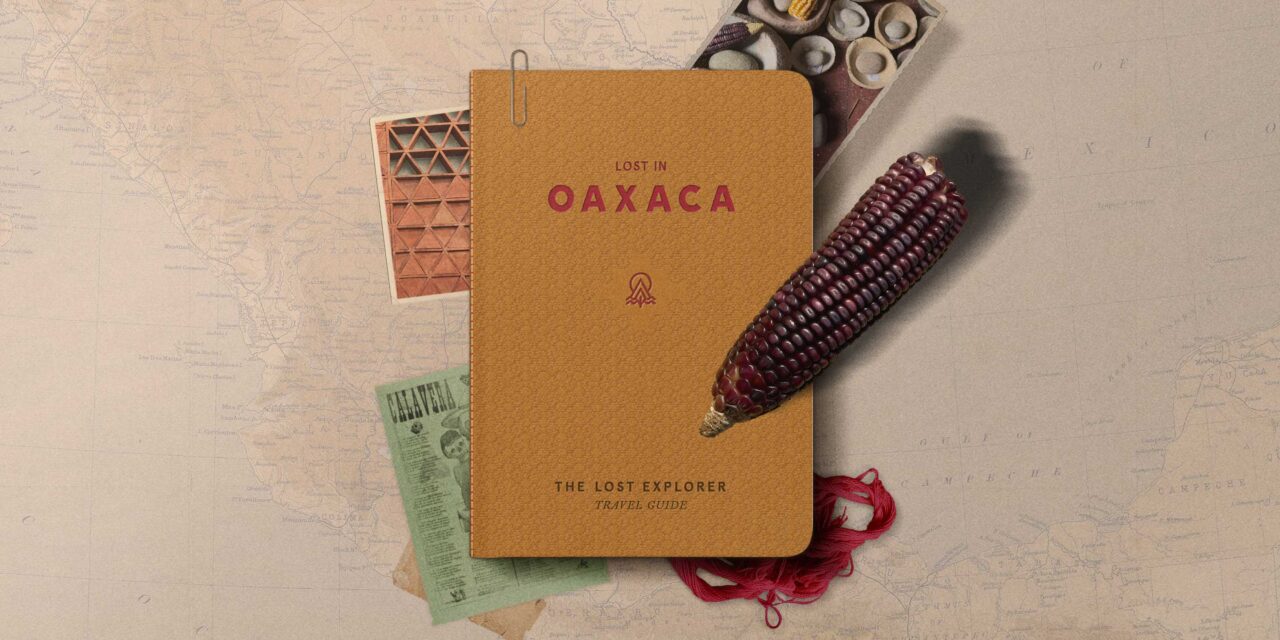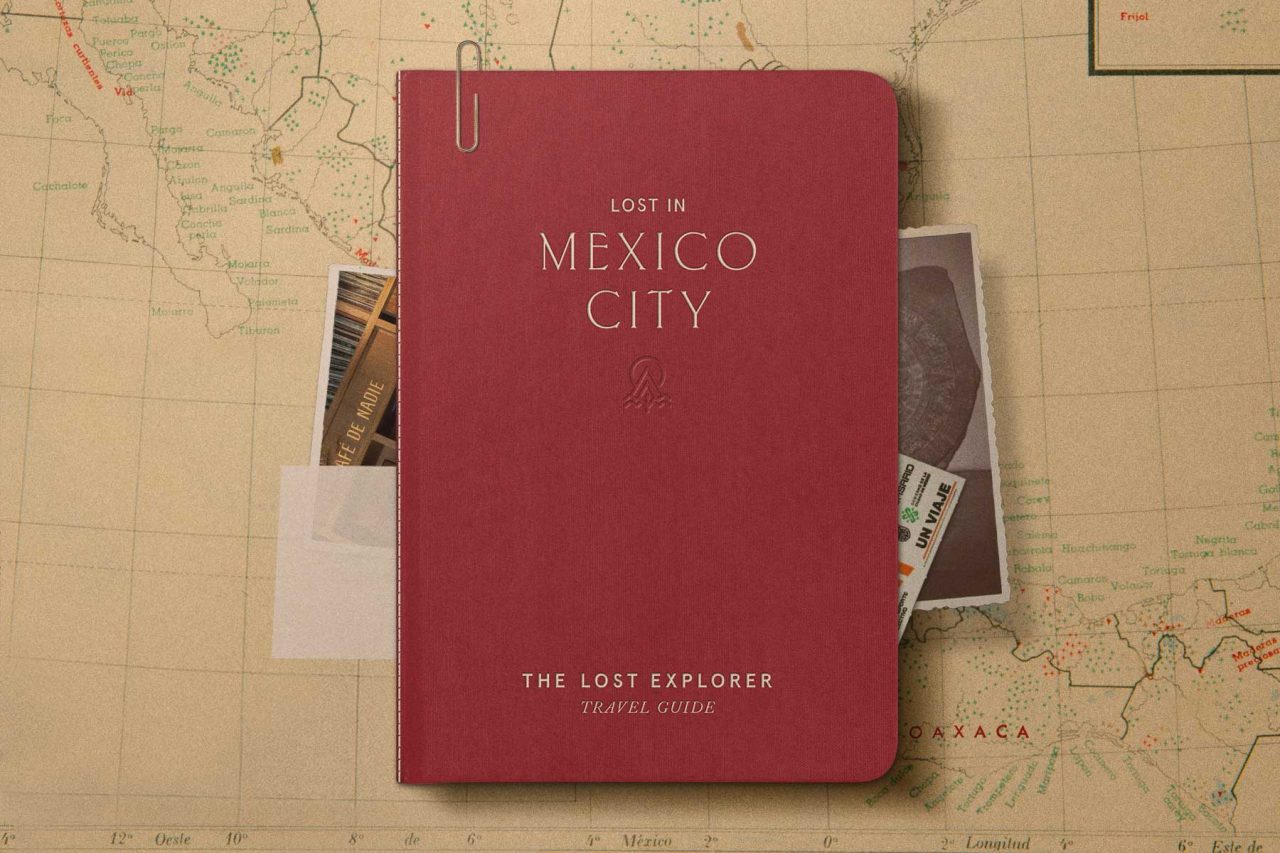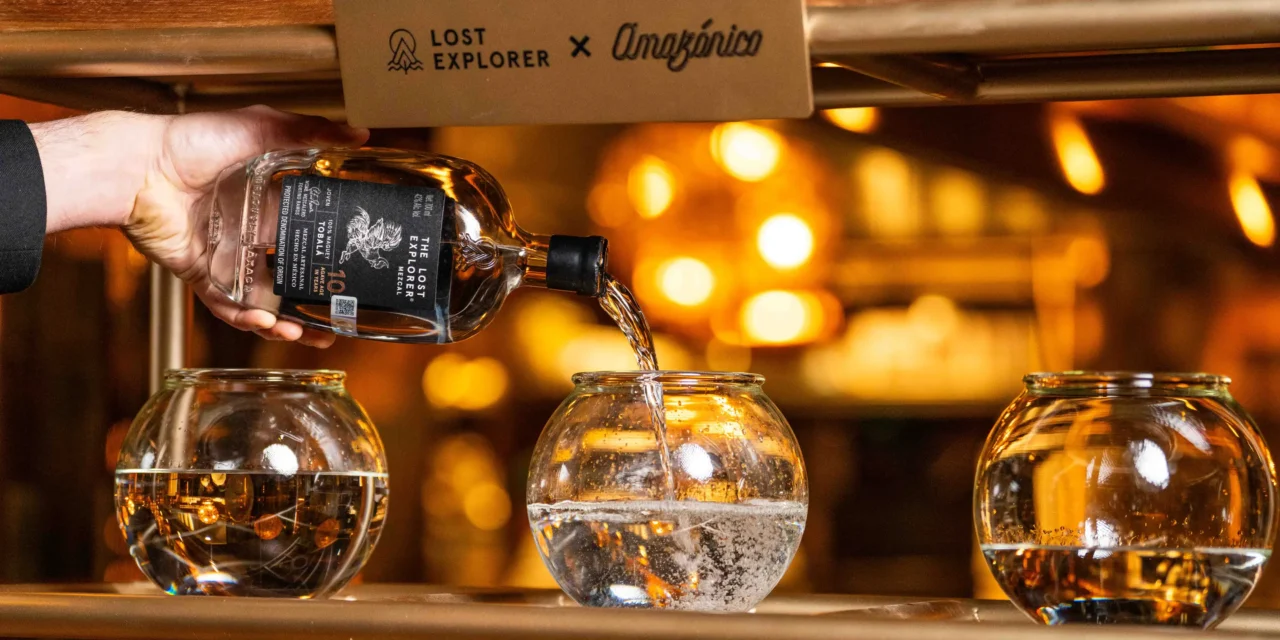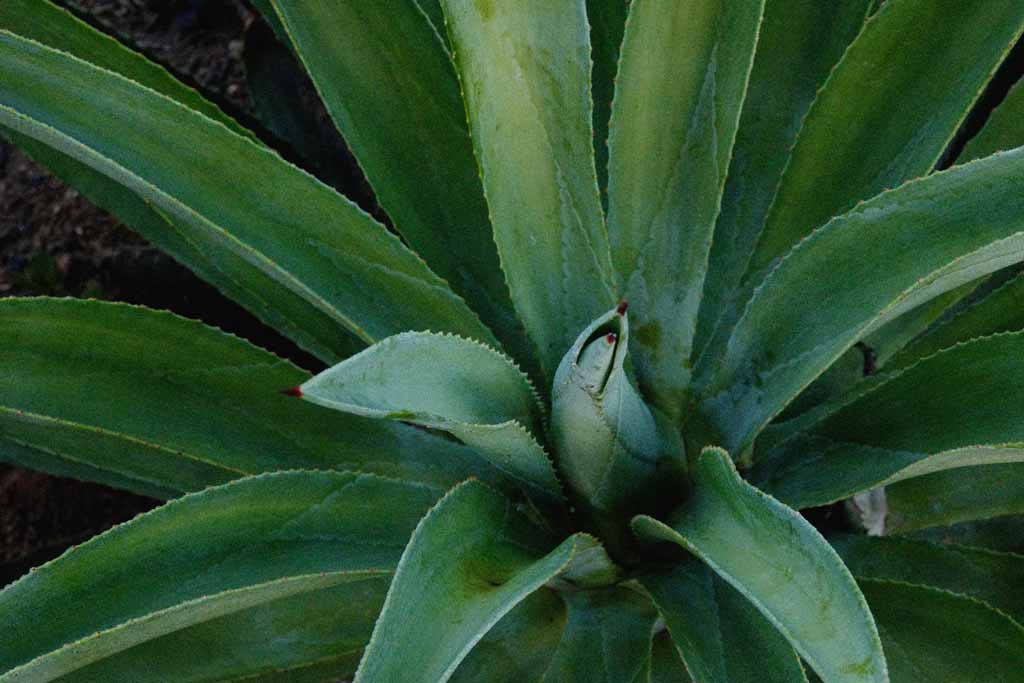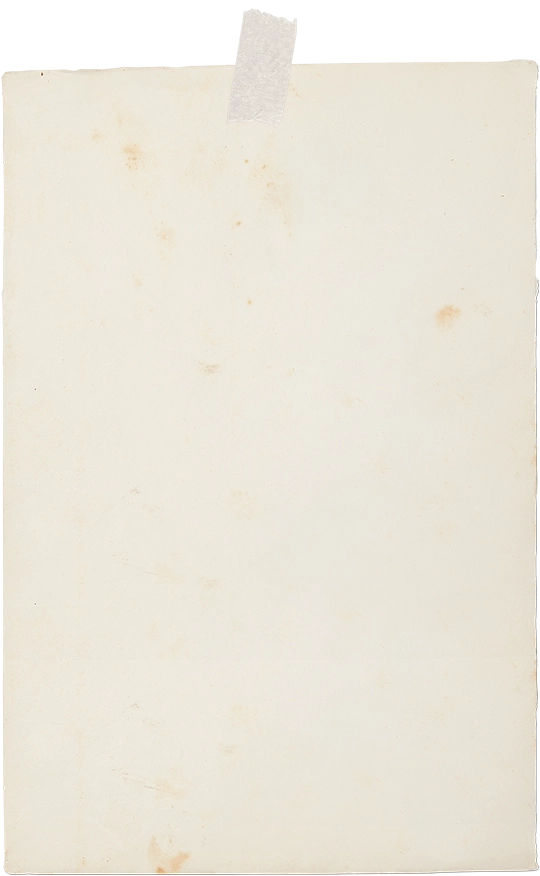The state of Oaxaca is defined by eight main regions, each with its own distinct rituals, languages, and culture. To say ‘Oaxacan food,’ ‘Oaxacan ingredients,’ or ‘Oaxacan culture’ is to evoke a rich ecosystem of cultural and biodiversity. Yet there’s such harmony and respect among its locals that while fiercely celebrating their uniqueness and differences, they harness an incredible sense of unity—something ever more rare in our world.
Every year in July, the indigenous peoples of Oaxaca come together for the Guelaguetza, the Zapotec word meaning to share or gift. In this celebration, each pueblo takes the stage to share its traditions that are heard by an arena of locals and visitors received as a gift of unified Oaxacan culture. This significance ripples throughout every facet of Oaxacan life. To eat, drink, see the sites, and stay in the center of Oaxaca is to partake in the spirit of communal generosity where a gift from Nature is a gift to itself.
More than near and dear to our hearts, Oaxaca is home. Our Lost in Oaxaca Guide is interconnected by a respect for conscious practices, independence, solidarity, and an unwavering tribute to mother earth.
“Cure yourself with the light of the sun and the rays of the moon. With the sound of the river and the waterfall.” — María Sabina, beloved Mazatec curandera and wisewoman
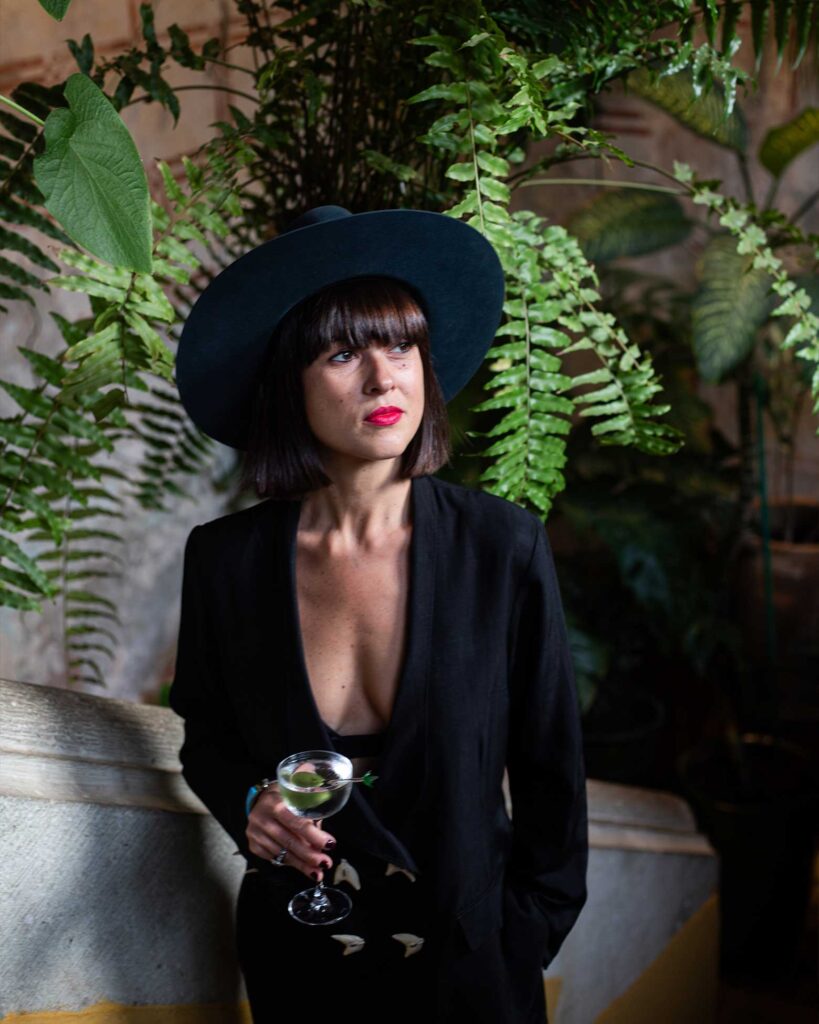
Meet our guest editor
Our guest editor for the Lost in Oaxaca guide is the talented mixologist and muse Alexandra Purcaru, founder and beverage director of Selva Cocktail Bar. With her creative flair and deep reverence for Oaxaca’s rich cultural and natural ecosystems, she offers a truly soulful guide for the culturally curious. Glowing from recent Michelin and Green Star recognition for her work at Los Danzantes, Alexandra invites you to explore Oaxaca with all your senses—savoring every sight, smell, taste, and feel in your travels.
EAT | DRINK | STAY | SEE/LEARN/PLAY | SHOP | BE IN NATURE
Eat
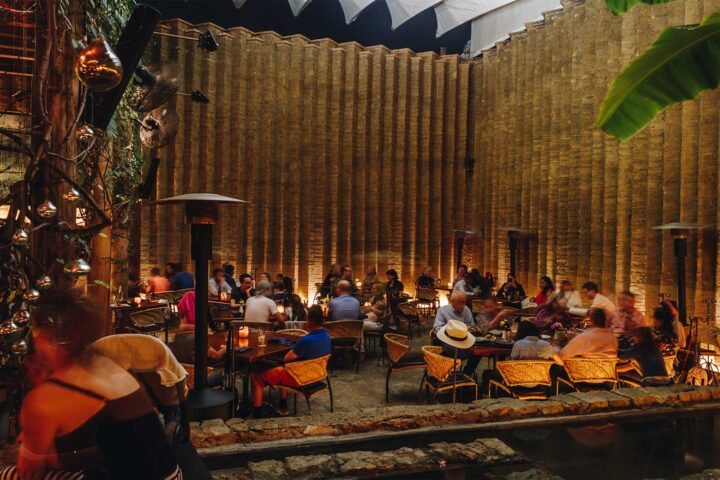
Los Danzantes
More of a ritual than a dining experience where seasonal ingredients are not just a tagline. If it’s not grown in their garden or consciously sourced from a local partner, then it doesn’t make the menu. Their sculptural setting invites you to dine slowly and enjoy a pre or post dinner chic cocktail at Selva located just upstairs.
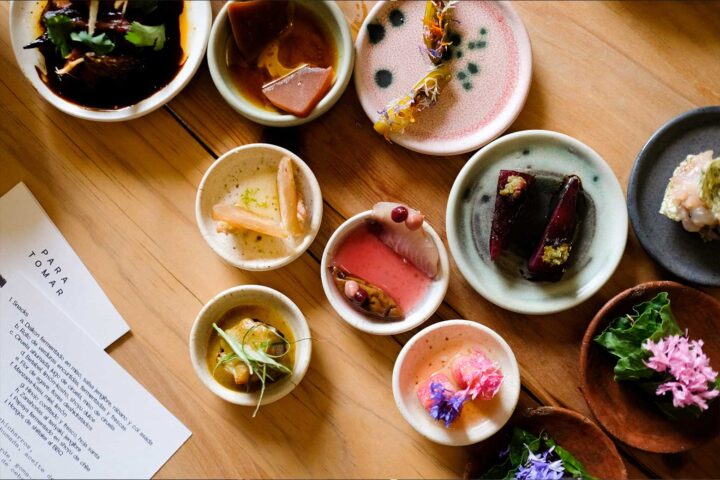
Labo Fermento
If you’re looking for something a little different on the palate, Labo Fermento specializes in fermentations of all kinds leaning toward Asian flavors and traditions. Sit down with friends in their interior courtyard for a beautiful communal style meal, complete with natural wines and even housemade kombuchas and tepaches. Shop their provisions including preserved miso, garum, and other homemade goodies to bring into your own kitchen.
Empanadas del Carmen Alto / Tacos del Carmen
Casual street food on a calm corner served with a smile under the sun or for late night cravings. Order the empanadas or memelas, which are like open-faced tacos made of super-fresh masa and ingredients from savory meats to vegetarian options like mushrooms and squash blossoms.
Madre
Wife-and-wife duo Nancy and Claudia cook inherited Yucatán style recipes they missed from their own mother’s kitchens. Madre’s casual taqueria serves up classic Mayan influenced dishes such as cochinita pibil with a Oaxacan twist. Simply put, Madre is an ode to mothers and in particular to ‘mujeres taqueras.’
Casa Leonora
Between their new rooftop restaurant in Centro, natural wine selection, music experiences, and creative cocktails, Casa Leonara is a class act. Post up for bubbles and oysters in this New York-meets-Oaxaca setting.
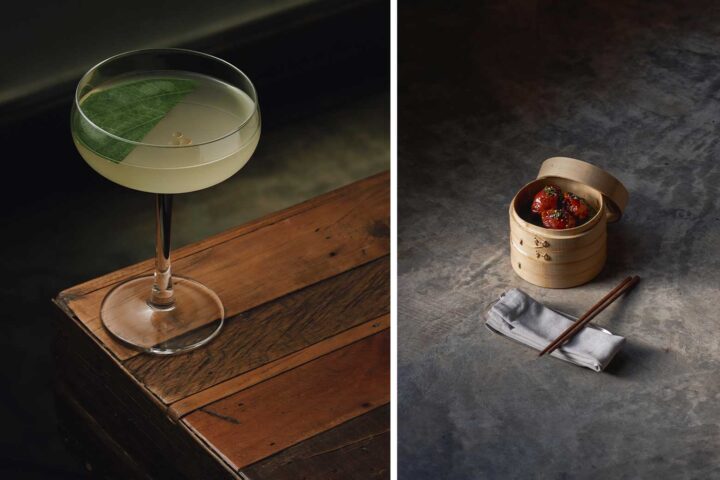
Cobarde
With a front row seat to the most vibrant street in Centro Oaxaca, Cobarde rooftop serves up a healthy obsession with eastern foodways and an undying respect for Oaxacan ingredients, mezcal, and tradition.
Crudo
An adoration for Oaxacan ingredients and the discipline of Japanese technique make Crudo a one-of-a-kind Omakase experience. Book a private room to enjoy the one on one conversations with Chef Ricardo Arrellano about this symphony of traditions. Complemented by design details like hand woven backpacks hanging from each bar seat instead of the usually clumsy bar hooks, makes for a thoughtful experience.
Onnno
Gourmet loafs of bread made of activated carbon, this lonchería is notorious for their sándwiches and non-traditional utilitarian architecture. Their charming indoor patio makes for a perfect catch up spot or pull up to their curbside to-go window.
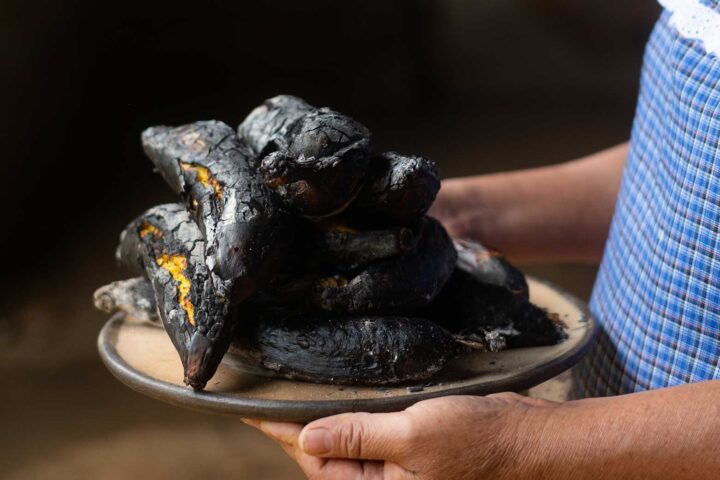
Alfonsina
Centered in the rustic backyard of their family home, ancestral smells of fire and wood fill the air, as mother Doña Elvia, and son Jorge prepare a five-course menu sourced that same morning from local growers at the Centro de Abastos market. Their homemade-style dishes celebrate both matriarch of the family, as well as mother earth and her abundant gifts found throughout the biodiverse regions of Oaxaca.
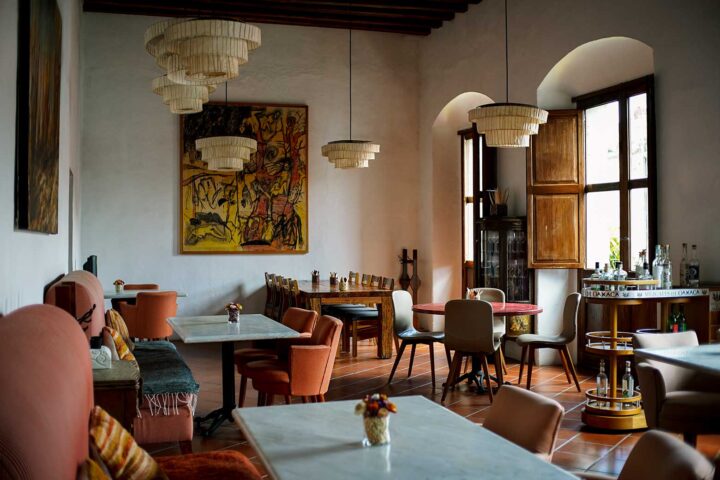
Origen
An ode to farmers and local producers, guided by the principles of sustainable and ethical practices, Origen is true to its name by focusing on the origins of the ingredients that make their cuisine possible. Enjoy dishes prepared with herbs, foraged mushrooms, spices, and veggies from the region paired with colorful cocktails under the roof of a stunning colonial style mansion.
Casa Oaxaca
A local institution and experience that taps into all the senses. Casa Oaxaca is a light-filled, indoor-outdoor colonial house with rooftop seating overlooking the quieter side of Centro’s Catedral Santo Domingo. We admire the delicate crafting of each dish that can include moles, a variety of chiles, proteins such as insects, and edible herbs and flowers.
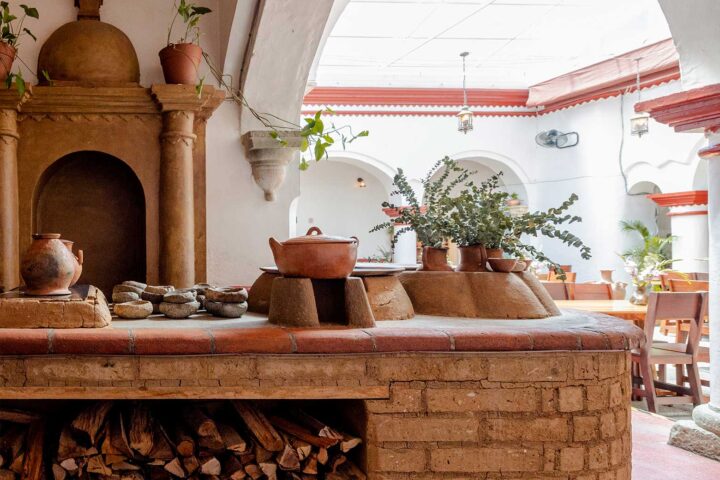
Levadura De Olla
A love letter to her ancestral home in the Sierra South region of Oaxaca, Chef Thalia Barrios shares precious secrets from home. Characterized by techniques and methods passed down through generations using corn-based ingredients cultivated in the pueblo of San Mateo Yucutindoó. Our favorite section of the menu dedicated to “ceremonial dishes” makes the meal all the more communal, tapping into memory and family.
Bodæga
Part bakery, part biolab. Bodæga studies, plants, grows, and produces endemic Oaxacan wheat used in all their mouthwatering baked goods. As resources such as water have become increasingly scarce in the already typically hot and dry valleys of Oaxaca, making the most out of their once a year crop is both an act of faith and good stewardship of the land.
Tierra del Sol
Rooted in the dignity of eating well manifested through their devotion to endemic maíz, chiles, and a variety of moles, Tierra del Sol is part bakery, part Atoleria (a hearty corn-based beverage) led by Mixteca chef Olga Cabrera. Enjoy an afternoon or evening on their terrace overlooking the botanical garden, savoring specialties from the adobe comal where women prepare fresh delights such as tetelas, picaditas, memelas, and huaraches.
Mercados
Explore Oaxaca’s markets for casual pit stops along your culinary journey. In addition to the visual feast, Oaxaca’s mercados such as Mercado XX de Noviembre, Mercado Benito Juárez, Mercado Sanchez Pascua, and Mercado La Cosecha, will introduce you to extraordinary everyday dishes like moles, tlayudas, memelas, aguas frescas, and more.
Drink
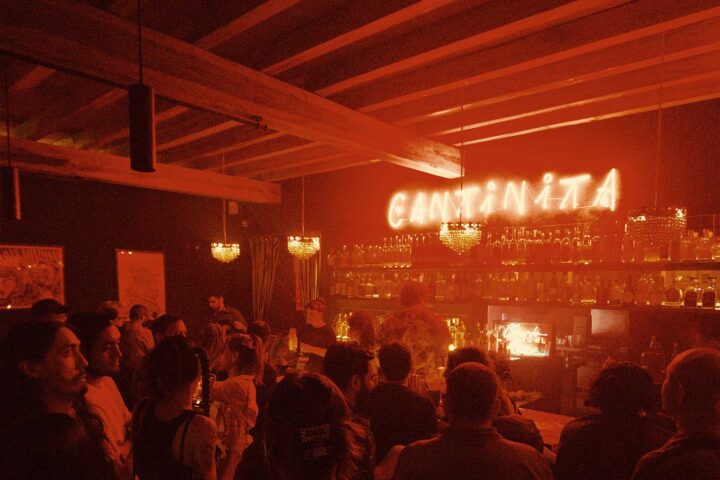
La Cantinita
If a bar was a noir film, it would be called La Cantinita. Located inside Hotel Sin Nombre, smoke dancing in the red neon light, sounds of jazz and muffled conversations fill the air along with aromas of citrus, herbs, and mezcal cocktail makings.
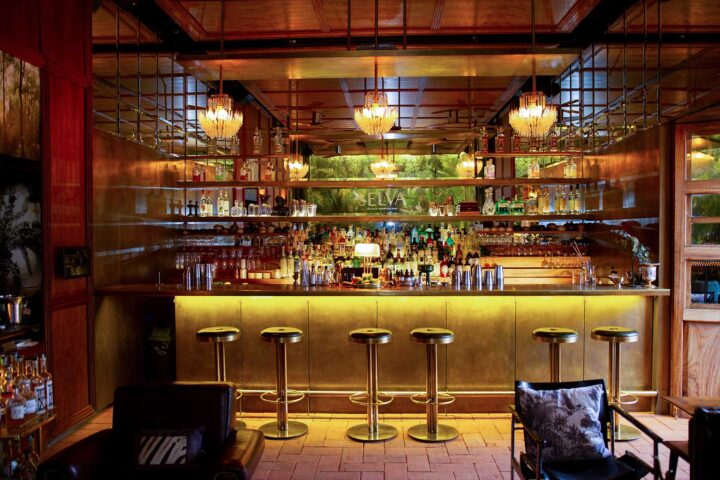
Selva
Viscerally eclectic, Selva invites you to a multisensory experience where imaginative cocktails are crafted out of Oaxaca’s diversity and richness of seasonal ingredients and agave-based spirits evoking conversations on heritage, culture, and terroir. Don’t be afraid to get fancy, have dinner at Los Danzantes, then cocktails at Selva prepared by famed mixologist, founder, and muse, Alexandra Purcaru.
Sabina Sabe
Named for beloved Mazatec sabia, María Sabina who spoke wisdom through the land. The back bar is lined with unlabeled local mezcal as well known brands of every expression. This place reminds us of the local saying, “Para todo mal, mezcal. Para todo mal también.” Basically, mezcal cures all, bad and good. Guest bartenders craft cocktails with local ingredients paired with inventive bites.
Bocaflor
Located inside Marchanta boutique, shop colorful contemporary textiles mostly from Peru, then pull up to a tiny bar for a zesty cocktail. Bocaflor also serves up non-alcoholic refreshments like coffee and homemade ferments like kombucha and kefir to cleanse after all the wonderful mezcal you’ll be tasting.
Floreria Macarena
Natural floral aromas linger as this flower-shop-by-day causally transitions into a cocktail bar by night. A pillar for community events and workshops, Florería Marcarena is small and revered by locals.
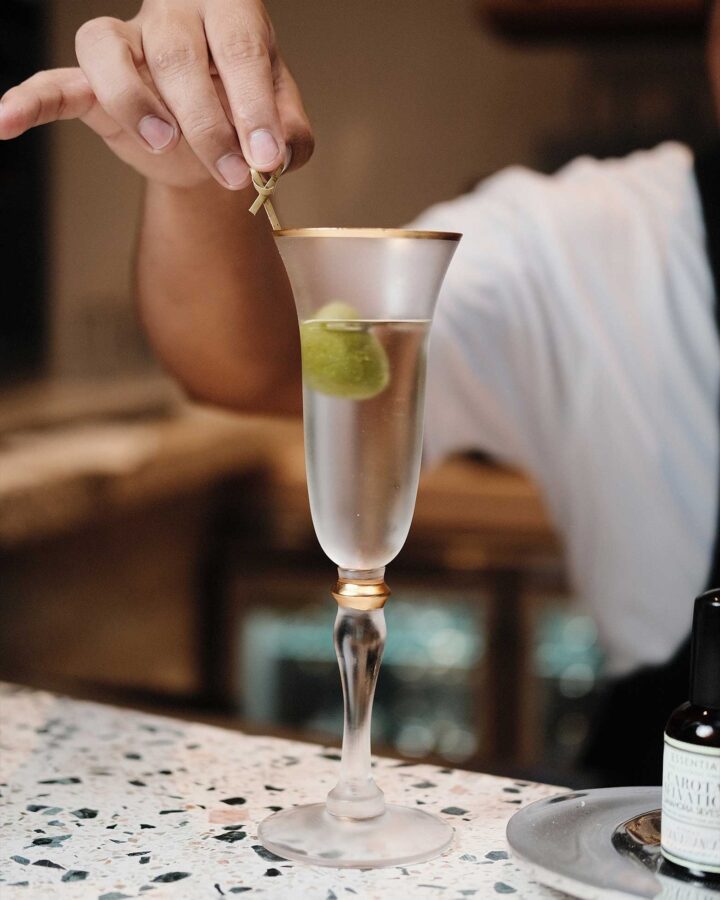
Leonora
Big sister to Casa Leonora restaurant recently opened in Centro, Leonora has more of a neighborhood café-bar feeling with unexpected velvety textures, palazzo bar, and yucatán-pink walls. Its location outside of Centro offers a reprise from the bustling scene while toasting to variations of cocktails and natural wines in a different setting.
Stay
Otro
Otro Hotel blends the best of both worlds with historic surroundings and contemporary comforts. A fusion of brutalist style and traditional materials sweep you through show stopping common spaces. Between the rooftop pool overlooking the cathedral, aromas from the open-fire style restaurant, and the underground cenote-like tranquility pool, we would like to be transported here every weekend.
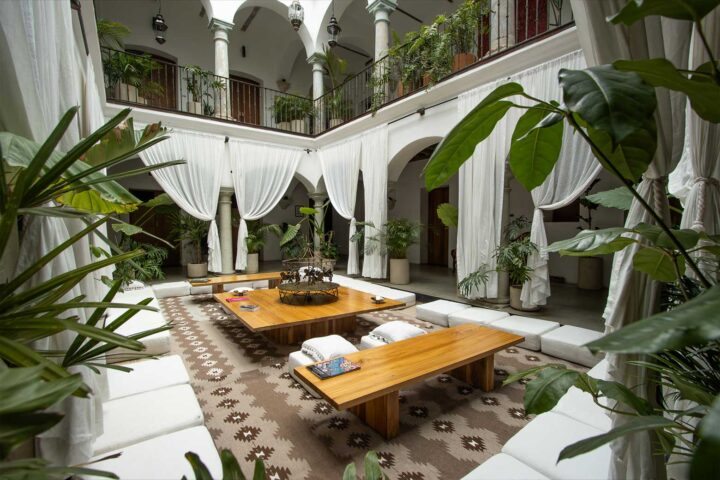
Sin Nombre
With a unique take on grandeur, Sin Nombre evokes the airy interior courtyards seen in North Africa and Morocco while giving a beautiful nod to Afro-Mexican descendent culture of the Oaxacan Costa Chica through a curated photographic journey along the walls of the hotel and rooms.
Boulenc B&B
After the success of their restaurant and bakery, Boulenc opened a proper B&B and provision shop so you quite literally never have to leave.
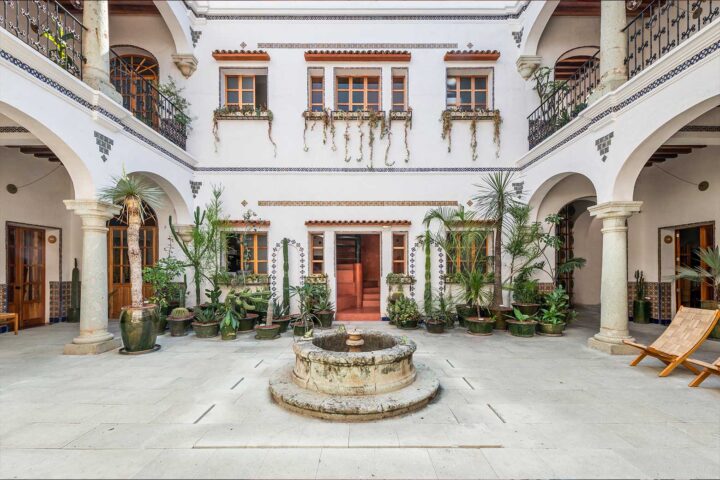
Grana B&B
Generous amenities like a full Mexican breakfast, all day coffee and tea service, and morning yoga, makes Grana feel like a retreat that embraces your pace of travel. At the heart of the casona is a stunning communal open kitchen where local women cook up traditional delights such as mole, handmade tortillas, and hot chocolate that remind you that in Oaxaca, food is love.
Casa Mosca
Giving and taking inspiration from its artist residents and creative guests, Casa Mosca offers a sanctuary of creativity. Re-designed house with stunning brutalist gardens, the artist owned space collaborates with La Clinica and Cuen Gallery to invite new energy.
Pugseal
Art hotel that pays homage to the Zapotec culture and symbols. With inspiration in every corner, from the muraled walls, work nooks, to the spiraling staircases, Pugseal properties have found the sweet spot of comfort meets culture.
Quinta Real
A classic choice with a sprawling estate and beautifully landscaped gardens. Quinta Real is true to the Spanish colonial style seen throughout Mexico where long stone corridors and archways provide plenty of cool cover from the hot Oaxacan sun.
Casa Antonieta
An apapacho of a place, meaning a sweet, comforting, embrace. There’s an ease to it all, from the simple textiles in the rooms, plenty of green tropical plants, shared long tables for a bit of work time or delicious coffee pick me up. Their Amá rooftop bar with an exclusively Mexican wine list, has a simple brick layout letting the cloud filled Oaxacan sunsets steal the scene.
See / Learn / Play
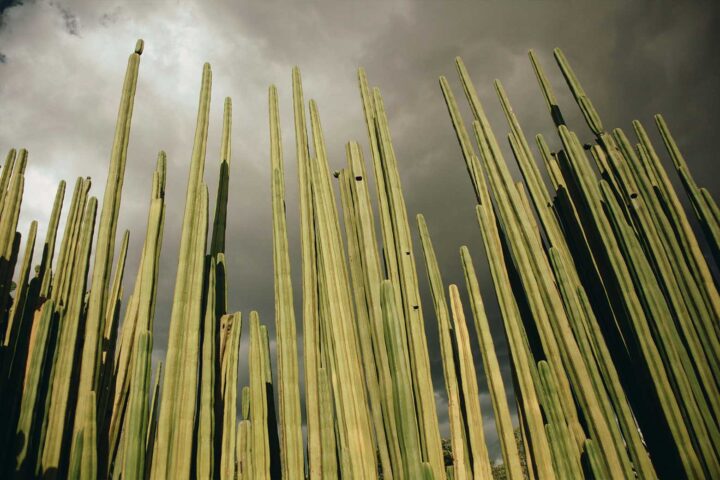
Jardin Botanico realizado por el Arquitecto Luis Zarate
Originally a garden just for the friars of the church, this site has grown into a rewilding project with the intention to reflect Oaxaca’s rich plant biodiversity, climates, and its cultural value in Oaxacan life. The ‘Ethno-botanical’ garden is home to over 1,200 species native to Oaxaca’s 8 regions. Guided tours are required, so be sure to book in advance. Many institutions in Oaxaca prioritize tours for local school children because community comes first, and we happen to agree.
Centro Fotográfico Manuel Alvarez Bravo
Founded by renowned Oaxacan artist Francisco Toledo, this institution is a cultural treasure in Oaxaca. Dedicated to preserving Mexico’s rich photographic heritage, the center reflects Toledo’s deep commitment to the arts and his vision of nurturing creativity through photography, making it a must-visit for art and history enthusiasts alike.
Tlacochahuaya
Referred to as the Zapotec ‘Sistine Chapel’ in Oaxaca, this church located just 30 minutes outside Oaxaca City center is a fusion of indigenous and colonial artistry and a reflection of the Oaxacan Baroque style.
Centro Cultural de San Agustin
Nestled in the town of Etla, just 40 minutes driving outside Oaxaca City, this charming terracotta-brick complex is set within the remnants of an old paper factory. It now hosts international exhibitions, an artist residency program, and workshops for the local community. Founded by the iconic artist and painter Francisco Toledo, the Cultural Center is a must-see for art lovers. As you head into Etla, keep an eye out for cozy B&Bs along the village road—perfect spots to relax after your visit in cool shaded patios sipping mezcal accompanied by spiced nuts and traditional tlayudas.
Shop
Like food, there’s so much good shopping to explore in Oaxaca. Some of our most cherished finds are from wandering into a random shop or market stall that caught our eye. And a lot of our favorite shopping is directly at the artisan’s workshops outside the city center. Here’s a few spots to start out, but mainly, we recommend lots of wandering with eyes wide open.
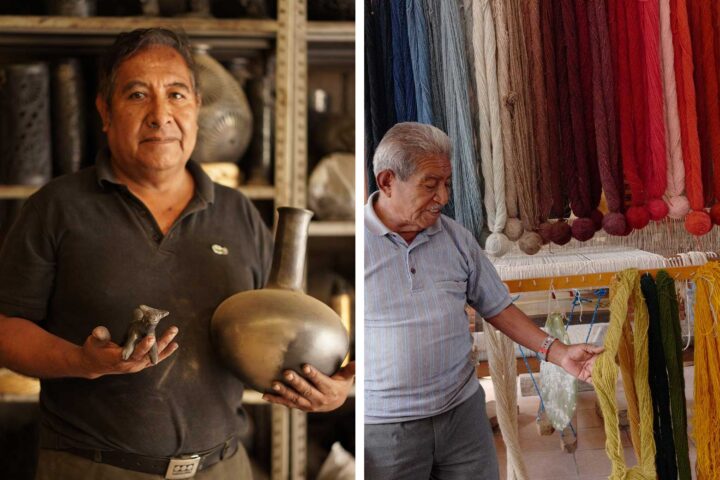
Artisan Workshops Outside the City
This is by far our favorite way to learn about and buy artisan goods. If you have the time, schedule a special tour to see what you’re interested in—handmade candles, the special textile town of Teotitlán de Valle, black clay ceramics (barro negro), red clay ceramics (barro rojo), alebrijes…
Marchanta
Marchanta offers truly elegant wearable art from Mexico, Peru, and India. Most pieces showcase the textile artisan traditions and feminine silhouettes. Once you’re done with this retail therapy session, have a seat at their tiny bar for a refreshing agave cocktail or an espresso pick-me-up.
Cooperativa 1050º
There are many (like, many) places to buy ceramics in Oaxaca. What sets Cooperativa 1050º apart is it’s a shop that’s run by artisans from seven communities across Oaxaca, Puebla and Chiapas who practice social and participatory design to keep pottery as a tradition in contemporary dialogue. Here you’ll find gorgeous everyday pieces with warm personalities that will develop a special patina the more you use them.
Huizache Artisan Market
This spot’s a great one-stop shop for perusing the many types of art & craftwork Oaxaca is known for including silver, alebrijes, ceramics, meticulous textiles, and much more. The quality of the items here is very good as well.
Tienda Q
A boutique showcasing a brilliant curation of clothing, accessories, and art/objects by contemporary Mexican artists. Here, excerpt to find easy silhouettes, quality materials, unique jewelry pieces, designer huaraches, and open space.
Boulenc’s shop
Right next door to the bakery-restaurant-B&B Boulenc, you’ll find a small provisions shop. From locally crafted ceramics and candles to a small produce selection and wine to their mouthwatering salsa macha, this little shop has something to capture anyone’s imagination (or palate).
Be in Nature
San Jose del Pacifico
Mountains are a metaphor for protection. At 2,500 meters above sea level, rent a car and embark on a journey that drops you into the ancestral lifeways of this tropical forest known as the Sierra Sur. Open to visitors searching for the quiet adventures of foraging unique flora, hiking in thick fog that cuts off visibility in its duty to cool off the earth, purifying temazcales, and epic star gazing.
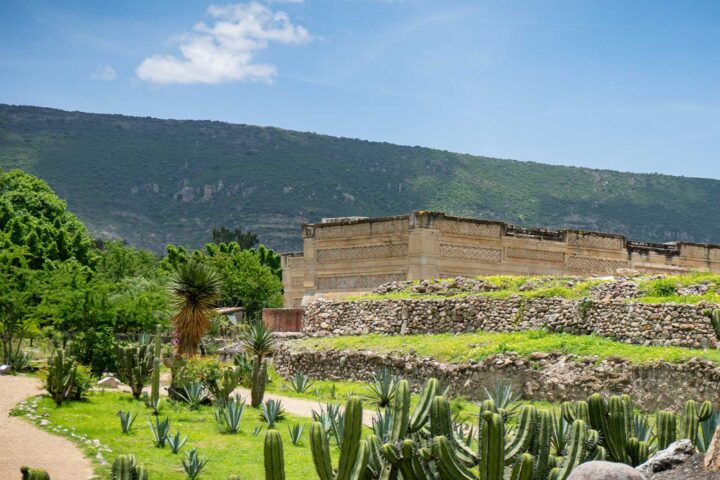
Mitla
Just outside Oaxaca City accessible by taxi or bus, the ancient Zapotec site of Mitla offers a glimpse into the region’s pre-Hispanic history. Known for its intricate geometric mosaics and rich spiritual heritage, this sacred city invites curious travelers to explore its ruins and tunnels that shaped this cultural gem prior to Spanish colonization.
Monte Alban
A perfect place to watch the clouds. Just 30 minutes by taxi from Centro Oaxaca, this ancient plateau is surrounded by mountains with stunning valley views. Once called Hill of the Jaguar, the capital and ceremonial center of the Zapotec people, Monte Alban is now a UNESCO world heritage site that was inhabited by a procession of indigenous peoples including the Olmecs, Zapotecs, and Mixtecs who left behind structures, pyramids, ceramics, and even murals that have sticking similarities to those in Teotihuacan near Mexico City.
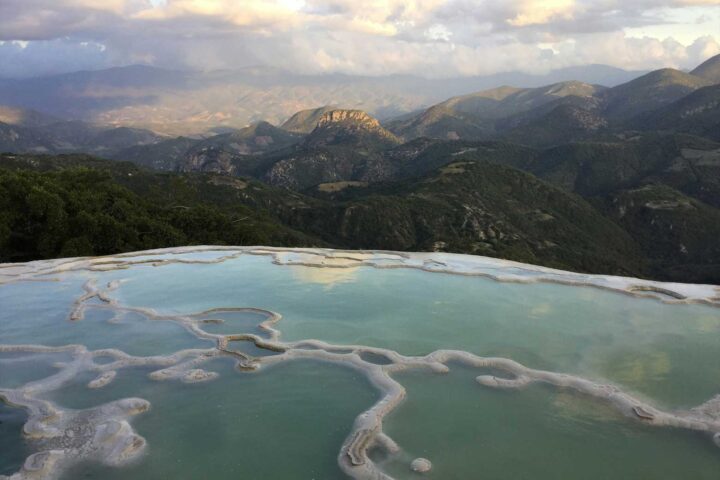
Hierve el Agua
With petrified cascades formed over thousands of years by mineral-rich springs trickling down travertine cliffs, Hierve de Agua is truly a natural wonder. These extroverted stalactites form surreal “frozen waterfalls” against the desert landscape. If you have your own rental car, visit at sunrise for breathtaking, crowd-free views from the pools above.
